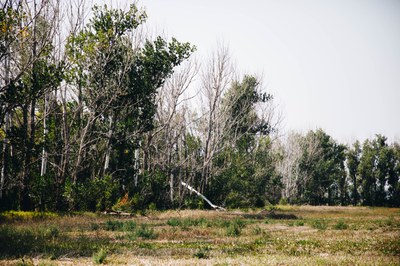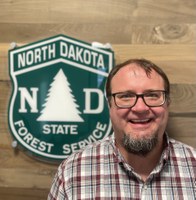Resetting the Clock on Windbreaks
The ice storm that started on Christmas night and lasted two days certainly caused headaches for many North Dakotans. The southeast part of the state was hit hardest with many losing power; some outages lasted over a week. A big “Thank You” goes out to all of those linemen who worked tirelessly to restore power to these areas. Not only did the weight of the ice take down power lines— it also wreaked havoc on our trees as well. Perhaps hit hardest were the older windbreaks that are on the decline.
The truth is that a lot of windbreaks across North Dakota were planted in the 1960’s and 1970’s and are no longer functioning the way they were intended. It is easy to understand why. A 60-year lifespan through the harsh conditions of North Dakota is considered good for most tree species. These trees were planted close together to provide protection for farmsteads, reduce erosion in fields, and provide wildlife habitat, but close planting also increases the susceptibility to damage from disease or

- As many of North Dakota’s windbreaks are reaching the end of their functional lifespan, the North Dakota Forest Service can help renovate them.
Renovation can be done in a variety of ways. Some shrubs and trees can be reinvigorated by a technique called coppicing. This is where the old growth is cut off near the ground and then new shoots grow from the base. Sometimes a windbreak is in decent condition, but it could use a couple additional rows on the outside to reinforce it. Soil Conservation Districts are a great resource that will help with design, order, and plant the trees for you. Other times it may be necessary to remove the old trees and plant new ones. This process can be labor and cost intensive, but it is important to remember that this is an investment for the next 60 years.
The North Dakota Forest Service understands this investment as well. That is why we began a partnership with the Outdoor Heritage Fund in 2015 to create the Windbreak Renovation Initiative. Eligible landowners who contract with us receive a portion of their costs reimbursed after completing approved renovation work and tree plantings. As part of the process, an on-site assessment will be completed to evaluate the current condition of the windbreak. Then, our Forest Stewardship Team creates recommendations on how to regain the function of the windbreak.
If you are one of the many whose trees took a major hit from this storm, it may be time to take a good look at your windbreak and see if it is still doing everything that you think it should be. If the answer is no, remember there are resources available to you to help reset the clock on your trees for future generations.
By Matt Olson, Forest Stewardship Manager



